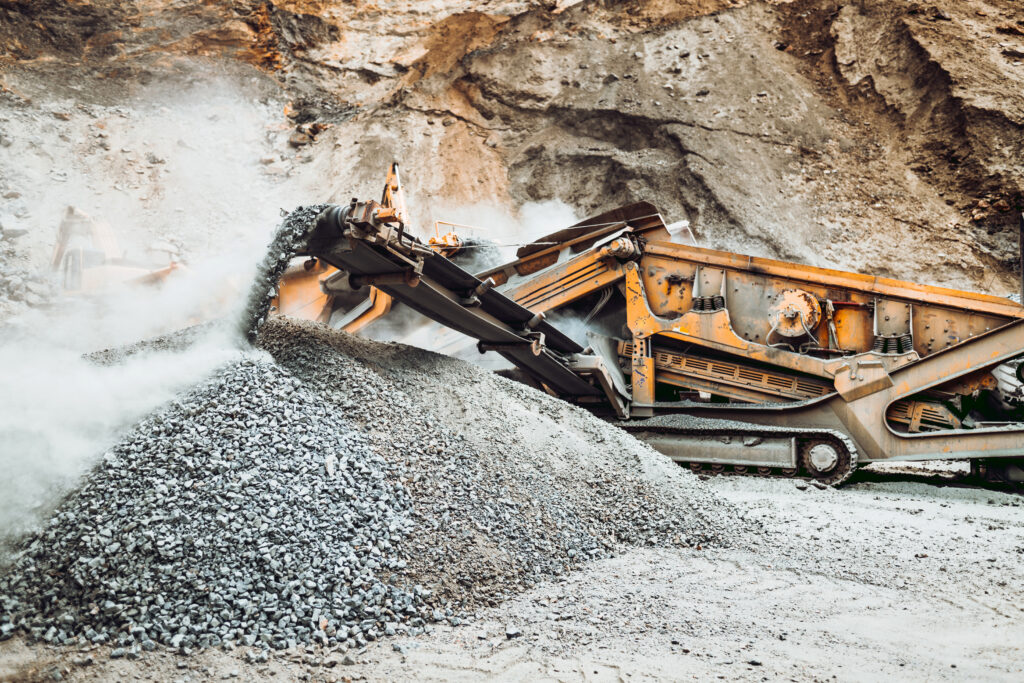Are you thinking about crushing large rocks and stones into smaller rocks, sand, gravel, or rock dust? If you are, here is what you will need to know!
You will need to work with professionals and reliable machinery if you wish to reduce the size or change the form of materials.
Crushing is a process through which a force is amplified through the assistance of mechanical advantage. Mechanical advantage is how you measure the amplification of force through a mechanical system.
What are crushers?
Crushers are machines with a metal surface that have been amplified by a mechanical tool to allow items and objects to be compressed into smaller fractions.
In an industrial setting, crushers are commonly classified by the degree to which they fragment the starting material. It is common practice within the industry to have multiple machines on the same project which alter the shape and size to different degrees.
Sometimes multiple stations are not needed when crushing. You can every now and then get away with using a single primary, or secondary crushing technique. If you require crushing something to 4-6 inches you can accomplish this with one machine.
What is primary crushing?
Primary crushing is generally used to reduce the size of the material until it can be handled by a secondary crusher. Compression-style crushers such as cone, jaw, and gyratory are often among the primary crushing machinery; however, sometimes you will find there can be suitable overlap and may find these machines operating as secondary crushing tools.
What is secondary crushing?
In secondary crushing, you need to consider the reduction ratios of the material you are working with. Secondary crushing is, essentially, the second stage of material compression where an object is put through a secondary impactor or cone-crusher to break the object down even further. Knowing the requirements and ratios you need the object to have before carrying out tertiary crushing is of the utmost importance.

What are tertiary and quaternary crushing?
The overarching goal of tertiary and quaternary machines is to sculpt a marketable object through the action of compression. Like previous crushing techniques, there may be some overlap of tools.
How many different types of rock crushers are there?
Jaw Crushers
Jaw crushers use a mechanical force to enable items to be compressed by the two jaws of the machine. One jaw remains still, while the other reciprocates. A jaw crusher, sometimes called a toggle crusher, consists of two vertical jaws. One remains stagnant, while the other moves back and forth relative to the first jaw through a pitman mechanism.
Jaw crushers are, generally, used to break large rocks into more manageable pieces.
Gyratory Crushers
One of the main primary crushing machines, gyratory crushers is similar to jaw crushers as they consist of a concave surface and a conical head. These surfaces are typically lined with manganese steel surfaces.
In mining and processing plants, you will often find that gyratory crushers are the main primary crushing machine.
Cone Crushers
Cone crushers can be divided into four categories: compound cone crusher, spring cone crusher, hydraulic cone crusher and gyratory crusher.
Cone crushers are similar to gyratory crushers; however, they generally have less steepness inside the crushing chamber. They also have a parallel zone which is located between crushing zones.

Compound Cone Crushers
Compound cone crushers are able to crush objects with over medium hardness. This type of crusher is generally used within the chemical industry, as well as the area of construction concerned with bridge and road production.
Spring Cone Crushers
Spring cone crushers are able to compress things over medium hardness and is generally used within metallurgy and the chemical industry. When used in conjunction with a jaw crusher it can be used as a tertiary or quaternary crushing machine.
Hydraulic Cone Crushers
Hydraulic cone crushers come with single cylinder and multi-cylinder options. Single and multi-cylinder options generally have the same retention time in the crushing chamber. Although, one difference is the time it takes to complete a task. Multi-cylinder cone crushers swing faster than single-cylinder options.
If you want to find out more about any of these crushing techniques, let us know!














